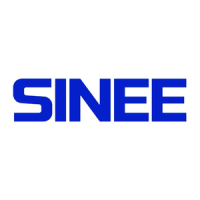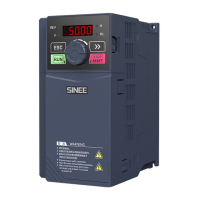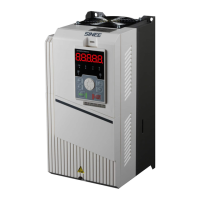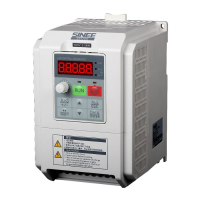Do you have a question about the Sinee EM730/EM730E-2R2-3B and is the answer not in the manual?
Illustrates the standard wiring diagram for connecting peripheral devices to the inverter.
Details the composition and functions of the main circuit terminals for power connections.
Explains the composition and functions of control circuit terminals for external signals.
Provides a step-by-step flowchart for the inverter commissioning process.
Lists essential checks to perform before turning on the power supply.
Details basic parameters like drive control modes and command sources.
Explains the configuration of digital and analog input terminals.
Explains the configuration of digital and relay output terminals.
Details parameters related to inverter start and stop control methods.
Details parameters for Voltage/Frequency (V/F) control mode.
Details parameters for speed sensorless vector control (SVC) mode.
Details parameters for various protection functions and shield settings.
Explains the process of self-identifying motor parameters for optimal performance.
Provides a step-by-step guide for performing motor parameter self-identification.
Lists protection codes, types, causes, and solutions for inverter abnormal statuses.
Analyzes common failures and provides troubleshooting steps for unexpected behavior.
Illustrates the standard wiring diagram for connecting peripheral devices to the inverter.
Details the composition and functions of the main circuit terminals for power connections.
Explains the composition and functions of control circuit terminals for external signals.
Provides a step-by-step flowchart for the inverter commissioning process.
Lists essential checks to perform before turning on the power supply.
Details basic parameters like drive control modes and command sources.
Explains the configuration of digital and analog input terminals.
Explains the configuration of digital and relay output terminals.
Details parameters related to inverter start and stop control methods.
Details parameters for Voltage/Frequency (V/F) control mode.
Details parameters for speed sensorless vector control (SVC) mode.
Details parameters for various protection functions and shield settings.
Explains the process of self-identifying motor parameters for optimal performance.
Provides a step-by-step guide for performing motor parameter self-identification.
Lists protection codes, types, causes, and solutions for inverter abnormal statuses.
Analyzes common failures and provides troubleshooting steps for unexpected behavior.












